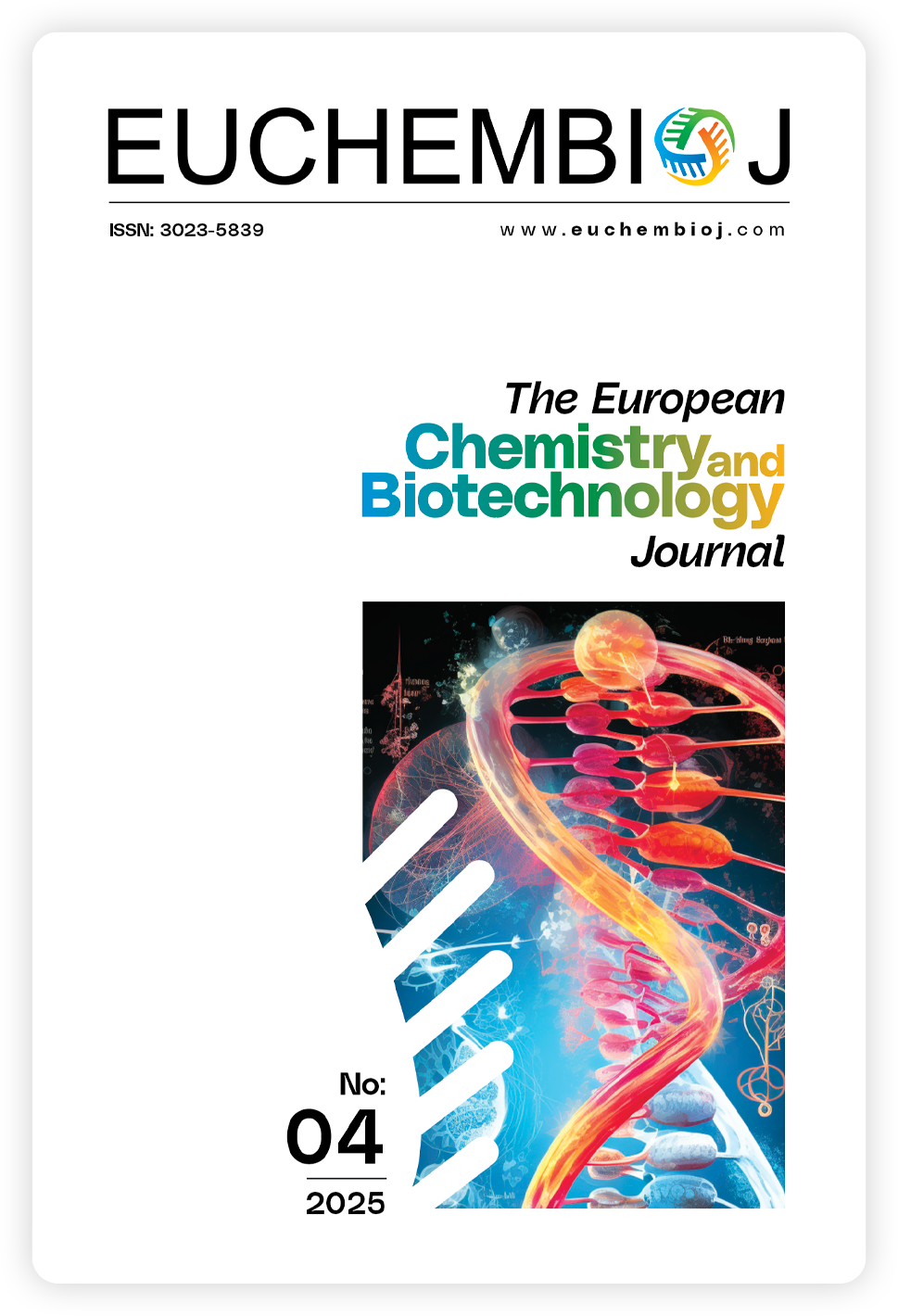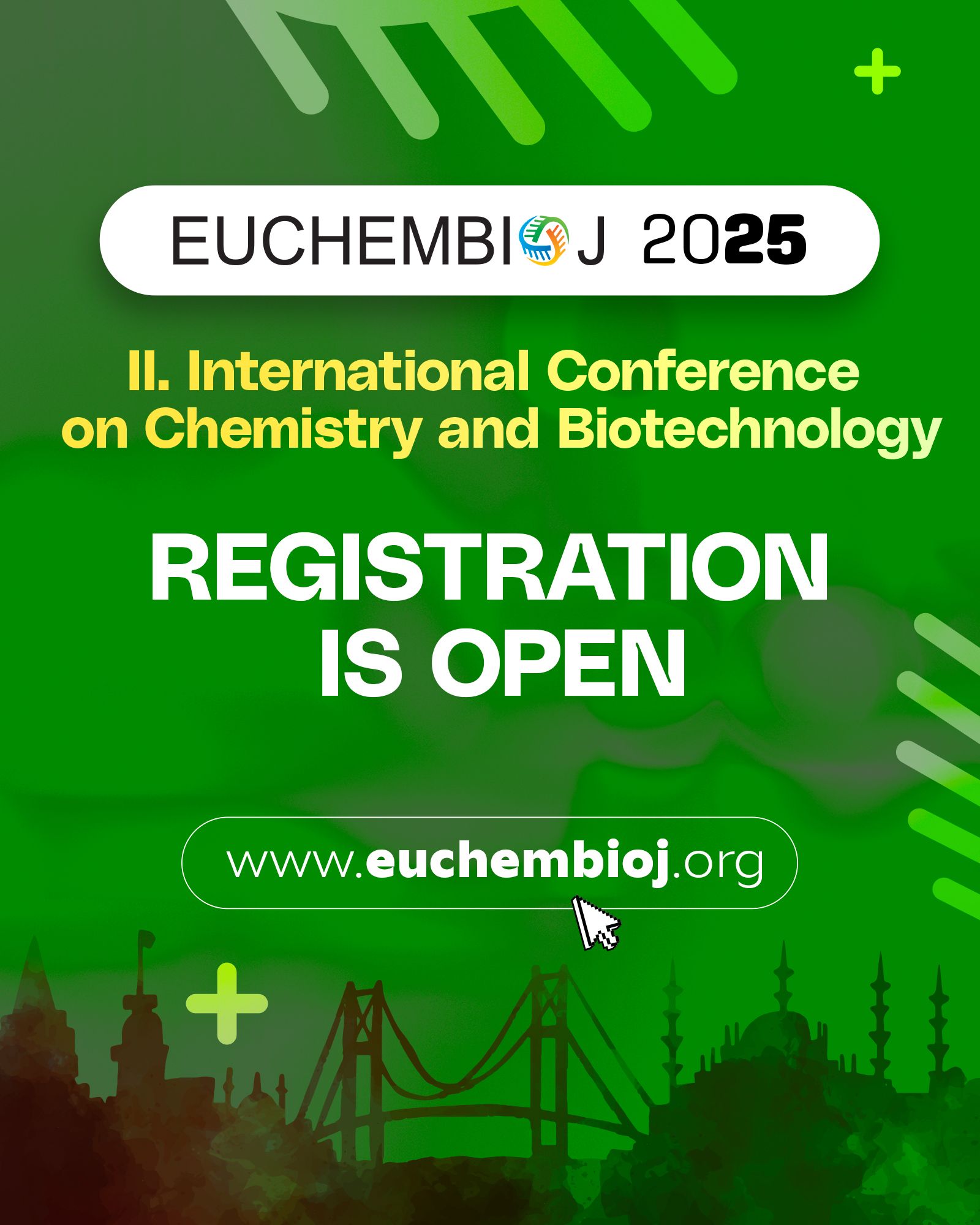Nanosomes carrying mycosynthesized silver nanoparticles as a drug delivery tool against MDR Salmonella typhi BTCB170
DOI:
https://doi.org/10.62063/ecb-61Keywords:
Antibacterial activity, (AgNPs) Silver-nanoparticles, liposomes, Salmonella typhiAbstract
New regimes of treatments and delivery systems are of great need today because of the increasing emergence of antimicrobial resistance among pathogens. In this study, initially liposomes were prepared comprising mycosynthesized silver nanoparticles in combination with meropenem. As a result of this combination, nanosomes were designed. In vitro analysis of the prepared formulation was done to check its effectiveness against MDR Salmonella typhi. Extracellular synthesis of (AgNPs) silver-nanoparticles through Aspergillus fumigatus BTCB01 was conducted. The particles were then characterized through by a zeta sizer, and they had particle size (299.6 nm), zeta potential (-2.64 mV) with a polydispersity value (0.4). Different liposomal formulations were prepared and characterized, each with different in size i.e. control liposomes had 318.7 nm, drug-encapsulated liposomes had 237.4 nm, silver-nanoparticles incorporated liposomes had 320.3 nm and Silver-nanoparticles incorporated drug liposomes had 215.3 nm size with different zeta potential and polydispersity index for each, i.e. -45.8 (PDI:0.3), -41.3 (PDI:0.3), -42.5 (PDI:0.4) and -39.6 mV (PDI:0.3), respectively, signifying a good stabile and homogeneous solution. Meropenem encapsulated liposomes had (94%) encapsulation efficiency, whereas Silver-nanoparticles incorporated drug liposomes had (86%) encapsulation efficiency. The release study of drugs through dialysis membranes graded in order of drug encapsulated liposomes ˃ Silver-nanoparticles incorporated drug liposomes ˃ control liposomes. In vitro analysis revealed that the antibacterial assay through the disk diffusion method revealed that drug-encapsulated liposomes showed a 1-fold increase in activity as compared to those which were incorporated with the silver nanoparticles. Conclusively, the addition of silver nanoparticles did not affect the stability of liposomes; however, they affected the encapsulation efficiency and drug release property of the delivery system.
References
Al jamal, W. T., & Kostarelos, K. (2007). Liposome–nanoparticle hybrids for multimodal diagnostic and therapeutic applications. Nanomedicine, 2(1), 85–98. https://doi.org/10.2217/17435889.2.1.85 DOI: https://doi.org/10.2217/17435889.2.1.85
Amerasan, D., Nataraj, T., Murugan, K., Panneerselvam, C., Madhiyazhagan, P., Nicoletti, M., & Benelli, G. (2015). Myco synthesis of silver nanoparticles using Metarhizium anisopliae against the rural malaria vector Anopheles culicifacies Giles (Diptera: Culicidae). Journal of Pest Science, 89(1), 249–256. https://doi.org/10.1007/s10340-015-0675-x DOI: https://doi.org/10.1007/s10340-015-0675-x
Bawaskar, M., Gaikwad, S., Ingle, A., Rathod, D., Gade, A., Duran, N., Marcato, P. D., & Rai, M. (2010). A new report on mycosynthesis of silver nanoparticles by Fusarium culmorum. Current Nanoscience, 6(4), 376–380. https://doi.org/10.2174/157341310791658919 DOI: https://doi.org/10.2174/157341310791658919
Bernardi, D. S., Guidelli, E. J., Da Cruz, E. L. C. M., & Lopez, R. F. V. (2012). Preparation and characterization of liposome containing ovalbumin and silver nanoparticles. Revista Eletrônica de Farmácia, 9, Article 01.
Bothun, G. D. (2008). Hydrophobic silver nanoparticles trapped in lipid bilayers: size distribution, bilayer phase behavior, and optical properties. Journal of Nanobiotechnology, 6, 13. https://doi.org/10.1186/1477-3155-6-13 DOI: https://doi.org/10.1186/1477-3155-6-13
Choi, J. G., Kang, O. H., Lee, Y. S., Chae, H. S., Oh, Y. C., Brice, O. O., Kim, M. S., Sohn, D. H., Kim, H. S., & Park, H. (2011). In vitro and in vivo antibacterial activity of Punica granatum peel ethanol extract against Salmonella. Evidence Based Complementary and Alternative Medicine, Article ID 717763. https://doi.org/10.1093/ecam/nep105 DOI: https://doi.org/10.1093/ecam/nep105
Ding, B. S., Dziubla, T., Shuvaev, V. V., Muro, S., & Muzykantov, V. R. (2006). Advanced drug delivery systems that target the vascular endothelium. Molecular Interventions, 6(2), 98–112. https://doi.org/10.1124/mi.6.2.7 DOI: https://doi.org/10.1124/mi.6.2.7
Drulis Kawa, Z., Gubernator, J., Dorotkiewicz Jach, A., Doroszkiewicz, W., & Kozubek, A. (2006). A comparison of the in vitro antimicrobial activity of liposomes containing meropenem and gentamicin. Cellular & Molecular Biology Letters, 11(3), 360–375. https://doi.org/10.2478/s11658-006-0030-6 DOI: https://doi.org/10.2478/s11658-006-0030-6
Eid, K. A. M., & Azzazy, H. M. E. (2014). Sustained broad spectrum antibacterial effects of nanoliposomes loaded with silver nanoparticles. Nanomedicine, 9(9), 1301–1310. https://doi.org/10.2217/nnm.13.89 DOI: https://doi.org/10.2217/nnm.13.89
Espinoza, J. T., Novak, R. S., Magalhães, C. G., Budel, J. M., Justus, B., Gonçalves, M. M., Boscardin, P. M. D., Farago, P. V., & Paula, J. d. F. P. D. (2020). Preparation and characterization of liposomes loaded with silver nanoparticles obtained by green synthesis. Brazilian Journal of Pharmaceutical Sciences, 56, e18601. https://doi.org/10.1590/s2175-97902020000118601 DOI: https://doi.org/10.1590/s2175-97902020000118601
Fenske, D. B., Chonn, A., & Cullis, P. R. (2008). Liposomal nanomedicines: an emerging field. Toxicologic Pathology, 36(1), 21–29. https://doi.org/10.1177/0192623307310960 DOI: https://doi.org/10.1177/0192623307310960
Fritze, A., Hens, F., Kimpfler, A., Schubert, R., & Peschka Süss, R. (2006). Remote loading of doxorubicin into liposomes driven by a transmembrane phosphate gradient. Biochimica et Biophysica Acta – Biomembranes, 1758(11), 1633–1640. https://doi.org/10.1016/j.bbamem.2006.08.012 DOI: https://doi.org/10.1016/j.bbamem.2006.05.028
Gubernator, J., Drulis Kawa, Z., Dorotkiewicz Jach, A., Doroszkiewicz, W., & Kozubek, A. (2007). In vitro antimicrobial activity of liposomes containing ciprofloxacin, meropenem and gentamicin against Gram negative clinical bacterial strains. Letters in Drug Design & Discovery, 4(4), 297–304. https://doi.org/10.2174/157018007784620040 DOI: https://doi.org/10.2174/157018007784620040
Hădărugă, N. G., Hădărugă, D. I., Vlăzan, P., & Barbu Tudoran, L. (2011). New liposomes containing cobalt ferrite nanoparticles: synthesis and characterization. Journal of Agroalimentary Processes and Technologies, 17(1), 1–6.
Hue, P., Linh, L., Lam, N., Hai, N., Son, H., Toan, N., & Tung, B. (2015). Developing and evaluating in vitro effect of pegylated liposomal doxorubicin on human cancer cells. Journal of Chemical and Pharmaceutical Research, 7, 2239–2243.
Husseiny, S. M., Salah, T. A., & Anter, H. A. (2015). Biosynthesis of size controlled silver nanoparticles by Fusarium oxysporum: their antibacterial and antitumor activities. Beni Suef University Journal of Basic and Applied Sciences, 4(2), 225–231. https://doi.org/10.1016/j.bjbas.2015.07.004 DOI: https://doi.org/10.1016/j.bjbas.2015.07.004
Immordino, M. L., Dosio, F., & Cattel, L. (2006). Stealth liposomes: review of the basic science, rationale, and clinical applications, existing and potential. International Journal of Nanomedicine, 1, 297–315.
Jain, N., Bhargava, A., Majumdar, S., Tarafdar, J., & Panwar, J. (2011). Extracellular biosynthesis and characterization of silver nanoparticles using Aspergillus flavus NJP08: a mechanistic perspective. Nanoscale, 3(2), 635–641. https://doi.org/10.1039/C0NR00656D DOI: https://doi.org/10.1039/C0NR00656D
Karn, P. R., Cho, W., Park, H. J., Park, J. S., & Hwang, S. J. (2013). Characterization and stability studies of a novel liposomal cyclosporin A prepared using the supercritical fluid method: comparison with the modified conventional Bangham method. International Journal of Nanomedicine, 8, 365–377. https://doi.org/10.2147/IJN.S39025 DOI: https://doi.org/10.2147/IJN.S39025
Li, J., An, X., & Pan, Z. (2014). Photoinduced drug release from complexes of liposome and fluorescent silver nanoparticles. RSC Advances, 4(18), 9476–9483. https://doi.org/10.1039/C3RA48082H DOI: https://doi.org/10.1039/C3RA48082H
Madakka, M., Jyaraju, N., & Rajesh, N. (2018). Mycosynthesis of silver nanoparticles and their characterization. MethodsX, 5, 20–29. https://doi.org/10.1016/j.mex.2017.12.003 DOI: https://doi.org/10.1016/j.mex.2017.12.003
Marcato, P. D., & Durán, N. (2008). New aspects of nanopharmaceutical delivery systems. Journal of Nanoscience and Nanotechnology, 8(5), 2216–2229. https://doi.org/10.1166/jnn.2008.274 DOI: https://doi.org/10.1166/jnn.2008.274
Mukherjee, P., Ahmad, A., Mandal, D., Senapati, S., Sainkar, S. R., Khan, M. I., Parishcha, R., Ajaykumar, P., Alam, M., & Kumar, R. (2001). Fungus-mediated synthesis of silver nanoparticles and their immobilization in the mycelial matrix: A novel biological approach to nanoparticle synthesis. Nano Letters, 1(10), 515–519. https://doi.org/10.1021/nl0155274 DOI: https://doi.org/10.1021/nl0155274
Naqvi, S. Z., Kiran, U., Ali, M. I., Jamal, A., Hameed, A., Ahmed, S., & Ali, N. (2013). Combined efficacy of biologically synthesized silver nanoparticles and different antibiotics against multidrug-resistant bacteria. International Journal of Nanomedicine, 8, 3187–3195. https://doi.org/10.2147/IJN.S49284 DOI: https://doi.org/10.2147/IJN.S49284
Omri, A., Suntres, Z. E., & Shek, P. N. (2002). Enhanced activity of liposomal polymyxin B against Pseudomonas aeruginosa in a rat model of lung infection. Biochemical Pharmacology, 64(8), 1407–1413. https://doi.org/10.1016/S0006-2952(02)01346-1 DOI: https://doi.org/10.1016/S0006-2952(02)01346-1
Panwar, P., Pandey, B., Lakhera, P., & Singh, K. (2010). Preparation, characterization, and in vitro release study of albendazole encapsulated nanosize liposomes. International Journal of Nanomedicine, 5, 101–107. https://doi.org/10.2147/IJN.S8030 DOI: https://doi.org/10.2147/IJN.S8030
Patra, J. K., Das, G., Fraceto, L. F., Campos, E. V. R., Rodriguez Torres, M. P., Acosta Torres, L. S., Diaz Torres, L. A., Grillo, R., Swamy, M. K., & Sharma, S. (2018). Nano-based drug delivery systems: Recent developments and future prospects. Journal of Nanobiotechnology, 16, 71. https://doi.org/10.1186/s12951-018-0392-8 DOI: https://doi.org/10.1186/s12951-018-0392-8
Rivera Gil, P., Oberdörster, G., Elder, A., Puntes, V., & Parak, W. J. (2010). Correlating physicochemical with toxicological properties of nanoparticles: The present and the future. ACS Nano, 4(10), 5527–5531. https://doi.org/10.1021/nn1025687 DOI: https://doi.org/10.1021/nn1025687
Sadowski, Z., Maliszewska, I., Grochowalska, B., Polowczyk, I., & Kozlecki, T. (2008). Synthesis of silver nanoparticles using microorganisms. Materials Science-Poland, 26(2–3), 419–424.
Schumacher, I., & Margalit, R. (1997). Liposome encapsulated ampicillin: Physicochemical and antibacterial properties. Journal of Pharmaceutical Sciences, 86(6), 635–641. https://doi.org/10.1021/js9503690 DOI: https://doi.org/10.1021/js9503690
Shahzad, A., Saeed, H., Iqtedar, M., Hussain, S. Z., Kaleem, A., Abdullah, R., Sharif, S., Naz, S., Saleem, F., & Aihetasham, A. (2019). Size controlled production of silver nanoparticles by Aspergillus fumigatus BT¬CB10: Likely antibacterial and cytotoxic effects. Journal of Nanomaterials, Article ID 2019, 168698. https://doi.org/10.1155/2019/5168698 DOI: https://doi.org/10.1155/2019/5168698
Shelar, G. B., & Chavan, A. M. (2015). Myco synthesis of silver nanoparticles from Trichoderma harzianum and its impact on germination status of oil seed. Biolife, 3(2), 109–113.
Singh, S., Yadav, A. S., Singh, S. M., & Bharti, P. (2010). Prevalence of Salmonella in chicken eggs collected from poultry farms and marketing channels and their antimicrobial resistance. Food Research International, 43(8), 2027–2030. https://doi.org/10.1016/j.foodres.2010.07.021 DOI: https://doi.org/10.1016/j.foodres.2010.06.001
Singh, R., & Nalwa, H. S. (2011). Medical applications of nanoparticles in biological imaging, cell labeling, antimicrobial agents, and anticancer nanodrugs. Journal of Biomedical Nanotechnology, 7(4), 489–503. https://doi.org/10.1166/jbn.2011.1327 DOI: https://doi.org/10.1166/jbn.2011.1324
Torres, I. M. S., Bento, E. B., Almeida, L. D. C., Sá, l. Z. C. M. D., & Lima, E. M. (2012). Preparation, characterization and in vitro antimicrobial activity of liposomal ceftazidime and cefepime against Pseudomonas aeruginosa strains. Brazilian Journal of Microbiology, 43(4), 984–992. https://doi.org/10.1590/S1517-83822012000400022 DOI: https://doi.org/10.1590/S1517-83822012000300020
Waheed, N. A., Azeez, H. J., & Abachi, F. T. (2016). Combinations of carbapenem with fluoroquinolones or 1,3,4 oxadiazole-2 thione derivatives as new broad spectrum bactericidal antibiotics for ophthalmic preparation. Journal of Drug Design and Medicinal Chemistry, 2(5), 47–50. https://doi.org/10.11648/j.jddmc.20160205.11 DOI: https://doi.org/10.11648/j.jddmc.20160205.11
Yng, O. S. (2005). Liposomal preparations of benzoyl peroxide for the treatment of acne. https://scholarbank.nus.edu.sg/entities/publication/d9cc9837-5616-4ee2-ba0c-ac6d99c5a4d7
Zhang, L., Pornpattananangkul, D., Hu, C. M., & Huang, C. M. (2010). Development of nanoparticles for antimicrobial drug delivery. Current Medicinal Chemistry, 17(6), 585–594. https://doi.org/10.2174/092986710790416290 DOI: https://doi.org/10.2174/092986710790416290
Published
How to Cite
Issue
Section
License

This work is licensed under a Creative Commons Attribution-NonCommercial 4.0 International License.








